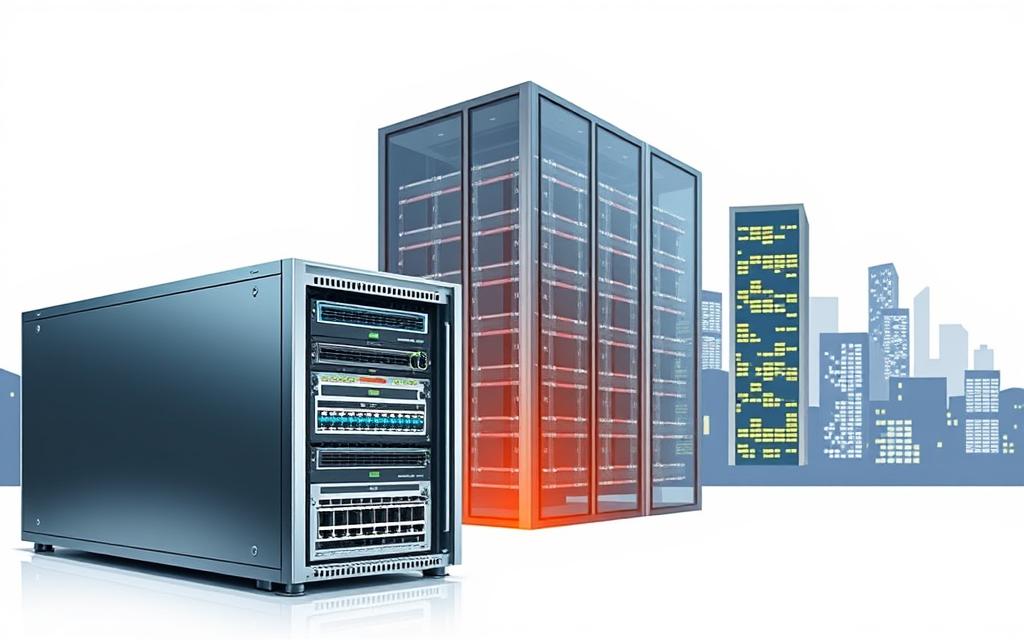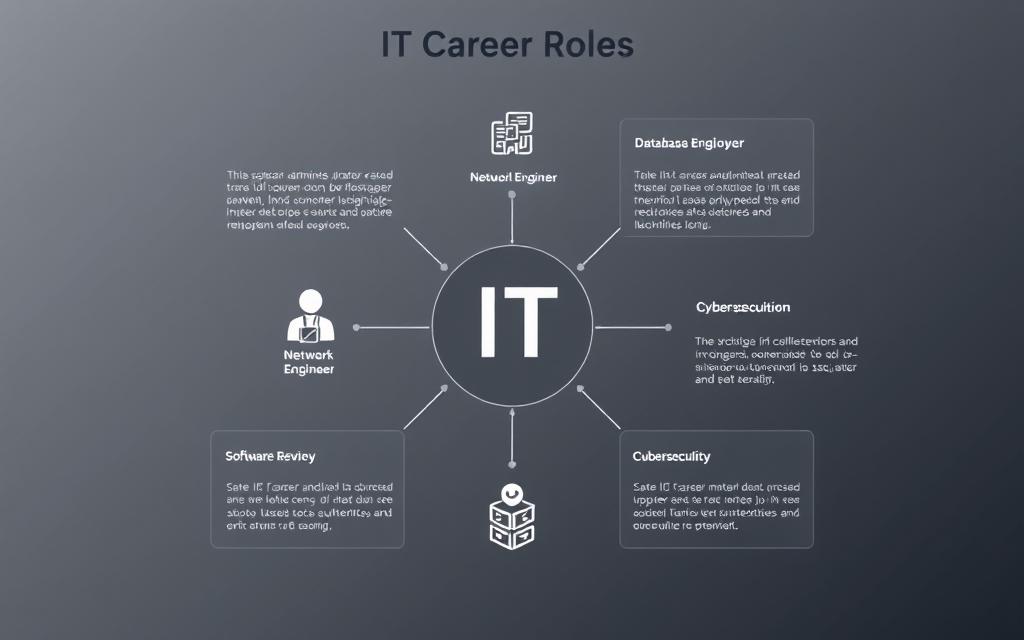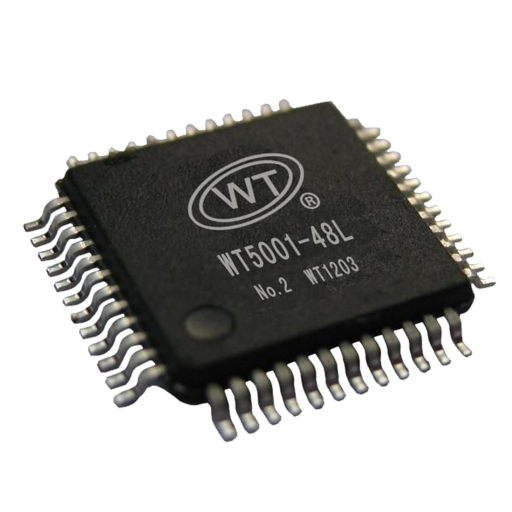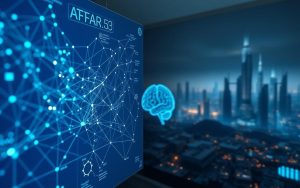Information technology (IT) is key to our digital world. It uses hardware, software, and networks to process, share, and store data. It’s all about mining raw data, sending it safely, and managing digital stuff.
Services like iCloud or Google One show how IT makes our lives easier. They help us keep our data in order.
Businesses use IT to make things run smoother. They use it for customer databases and tools for working together from afar. The Harvard Business Review first talked about IT in 1958. It’s grown to include things like artificial intelligence and real-time data analysis.
Even simple things like video calls using VPNs show IT’s importance. It keeps our digital connections safe.
Learning about digital technology basics helps us understand a lot. It’s about everything from phone apps to keeping companies safe from hackers. These systems help us in many ways, from making work better to keeping our memories safe.
Defining Information Technology
Information technology has changed how businesses handle data. It started with mechanical calculators and now includes cloud networks. This field helps in storing, getting, and keeping data safe across different sectors.
The Basic Concept Explained
Core purpose of IT systems is to solve real-world problems with digital tools. Experts create networks, manage databases, and set up security to keep data flowing smoothly. IT focuses on solving business problems like managing customer relationships or tracking inventory.
Historical evolution from manual processes
In the 1960s, companies moved from filing cabinets to mainframe computers. By the 1990s, they used client-server systems for instant data sharing. Now, cloud services like Microsoft Azure or AWS help teams worldwide work together.
IT vs Computer Science: Understanding the Difference
IT and computer science overlap but have different goals. Computer science looks into algorithms and software development. IT uses these technologies to make businesses run better.
Practical applications vs theoretical foundations
An IT expert might set up firewalls for a hospital’s records. A computer scientist could work on facial recognition software. Both need technical skills but focus on different parts of technology.
| Aspect | Information Technology | Computer Science |
|---|---|---|
| Primary Focus | System maintenance & optimisation | Algorithm design & computation theory |
| Typical Roles | Network administrator, IT support | Software developer, data scientist |
| Key Skills | Cisco networking, cybersecurity | Python programming, AI development |
Different career pathways compared
IT certifications like CompTIA A+ or CISSP lead to managing big systems. Computer science degrees often lead to software engineering or robotics. Cisco’s 2023 report shows 68% of IT pros start with vocational training, while 82% of computer science graduates get advanced degrees.
Key Components of Information Technology
Three main parts make up every good information technology system. These are physical devices, digital programs, and connection frameworks. They work together to run today’s businesses. Let’s look at how they interact with real-world examples.

Hardware Essentials
Enterprise hardware is the core of any IT system. It includes everything from data centre racks to laptops for employees. These physical parts do the heavy lifting in computing tasks.
Servers and enterprise equipment
Dell PowerEdge servers handle millions of tasks every day. Tools like VMware help businesses use their hardware better. Storage options range from NAS devices to Amazon Web Services’ data centres.
End-user devices: Computers and mobile technology
Today’s workplaces use a mix of desktops, tablets, and smartphones. Microsoft Surface devices show how hardware fits into flexible work settings. Systems for managing mobile devices keep them safe and up-to-date.
Software Fundamentals
Digital programs turn static hardware into active business tools. This layer includes operating systems and complex management platforms.
Operating systems and productivity suites
Windows 11 and macOS Ventura are common in business settings. Cloud-based suites like Google Workspace enable instant teamwork. Microsoft 365 combines well-known tools with AI features.
Enterprise resource planning (ERP) systems
SAP S/4HANA is a top ERP system that links finance, HR, and supply chains. It uses models like IBM’s to process data. Now, 65% of new ERP installations are cloud-based.
Network Infrastructure
Cloud networks have changed how businesses share information. They create secure connections across buildings and continents.
Local Area Networks (LANs) configuration
Cisco Meraki devices manage office connections. A well-set LAN reduces delays in video calls and file transfers. Segmenting the network also boosts security for key areas.
Cloud connectivity solutions
Azure ExpressRoute offers direct links to Microsoft’s cloud. Using AWS and Google Cloud helps avoid being tied to one vendor. SD-WAN technology improves traffic flow for remote teams.
These parts show how IT infrastructure adapts to business needs. From servers to cloud networks, each part is essential for digital success.
Practical Applications Across Industries
Information technology changes how businesses work in many fields. This section looks at three areas where industry-specific IT solutions make a big difference. They improve efficiency, security, and how companies connect with customers.
Healthcare Sector Implementations
The NHS’s move to digital shows how healthcare technology can save lives. Their electronic health records system helps doctors across 1,200 sites. It has cut down on mistakes by 33%, says NHS Digital.
Electronic health records management
Now, AI helps doctors diagnose faster. Epic Systems’ software checks for drug interactions right away. Cerner’s systems let GPs and specialists share data in real time.
Telemedicine platforms
Babylon Health’s video calls help with 40% of non-urgent cases in London. These platforms offer:
- Secure video chats
- Online prescriptions
- Chatbots for symptom checks
Financial Services Technology
Barclays’ fintech solutions stopped £113 million in fraud last year. Their systems check 1,200 things in 0.8 seconds to spot oddities.
Online banking security systems
HSBC uses biometrics for security. This includes:
- Voice recognition
- Behavioural checks (like typing speed)
- Blockchain for transactions
Algorithmic trading platforms
Goldman Sachs’ MARGE trades in 0.0007 seconds. Here’s how automated systems beat manual trading:
| Metric | Algorithmic Trading | Manual Trading |
|---|---|---|
| Average execution speed | 0.002 seconds | 4.7 seconds |
| Error rate | 0.03% | 1.2% |
| Annual cost savings | £2.8M per desk | N/A |
Retail and E-commerce Solutions
Oracle NetSuite’s tools cut stockouts by 61% for ASOS. Their cloud systems keep data in sync across 200+ channels instantly.
Inventory management software
Zara’s RFID system updates stock every 30 minutes. This leads to:
- 98% accurate inventory
- Quick restocking of popular items
- Automatic supplier alerts
Customer relationship management (CRM) tools
Salesforce’s Einstein AI predicts what customers will buy with 89% accuracy. John Lewis uses this to tailor offers based on:
- What customers have bought before
- How they browse online
- Social media interactions
Essential IT Roles and Responsibilities
Modern businesses rely on skilled IT professionals. They keep digital systems running well. Let’s look at three key roles in today’s tech world.

Technical Support Specialists
These experts fix computer problems for everyone. They do things like:
- Diagnosing network connectivity problems
- Upgrading server infrastructure
- Guiding users through system updates
The US Bureau of Labor Statistics says these jobs will grow 6% by 2033. Getting Cisco’s CCNA certification is a big plus for them.
Cybersecurity Analysts
These people protect digital assets from threats. They do things like:
- Monitoring systems for suspicious activity
- Implementing firewall protections
- Conducting vulnerability assessments
“Modern security teams need expertise in cloud security and threat intelligence analysis,” notes Cisco’s 2024 cybersecurity training guidelines.
This field is expected to grow 32%. It’s a great chance for those interested in network security jobs.
Network Administrators
These experts make sure systems talk to each other well. They do things like:
- Configuring routers and switches
- Optimising data transmission speeds
- Managing wireless access points
Many employers want people with Cisco’s CCNP Enterprise certification. The job is expected to grow 4% as companies get bigger.
Emerging Trends in Information Technology
New IT developments are changing how businesses work and serve customers. Artificial intelligence, cloud computing, and IoT are leading this change. They open up new chances in many fields.
Artificial Intelligence Integration
Today, companies use AI in IT to make things run smoother. Microsoft Azure’s cognitive services show how machine learning can quickly find patterns in big data. It’s 300% faster than doing it by hand.
Machine learning in data analysis
Retailers use predictive algorithms to guess how much stock they need with 92% accuracy. Banks use these tools to spot fraud right away, cutting down on false alarms by 40%.
Natural language processing applications
Chatbots, powered by NLP, handle 68% of customer service questions in big tech companies. In healthcare, voice-to-text transcription cuts down on paperwork by half.
Cloud Computing Advancements
Most companies use a mix of private and public cloud services. Amazon Web Services is leading in serverless computing. This lets developers focus on writing code without worrying about the hardware.
Hybrid cloud infrastructure models
Using a mix of cloud services, manufacturing companies save 35% on costs. It’s great for handling big spikes in demand.
Serverless computing architectures
Startups like serverless computing for its cost-effectiveness. It cuts down on waste by 78%. This makes it easy to test and scale up quickly.
Internet of Things (IoT) Expansion
IoT developments are changing cities and industries. Studies show smart cities can cut energy use by 22%. This is thanks to connected traffic and lighting systems.
Smart city implementations
In Barcelona, IoT helps manage waste, saving 30% on costs. Real-time sensors make sure bins are emptied when they’re full.
Industrial IoT monitoring systems
Oil refineries use sensors to spot equipment problems 14 days early. This edge computing saves £2.4 million a year by avoiding unexpected shutdowns.
| Technology | Key Feature | Industry Impact |
|---|---|---|
| AI Integration | Predictive analytics | 47% faster decision-making |
| Cloud Computing | Serverless architectures | 60% cost reduction |
| IoT Systems | Real-time monitoring | 30% efficiency gains |
Shaping Tomorrow’s Digital Landscape
Information technology is changing how industries work. It combines hardware, software, and networks into one. This change brings new ways to do things, like using AI in healthcare and blockchain in finance.
As companies focus more on data, IT experts play a key role. They help link new tech with business goals. This is important for success in today’s fast-changing world.
The IT world needs people who can adapt quickly. Jobs like cybersecurity and network management keep getting more complex. IBM offers training for these roles, focusing on cloud and infrastructure skills.
New tech like IoT and edge computing help solve big problems. Retailers use data to manage stock better, and factories use sensors to check equipment. These examples show how IT can make things more efficient.
For those in IT, learning never stops. Sites like Coursera offer courses that match Cisco and Microsoft certifications. This keeps skills up to date as tech changes fast.
Knowing IT basics opens doors to new opportunities. Every step forward in tech, like better networks or safer data, needs experts. Look into IBM’s program to stay ahead in this exciting field.







